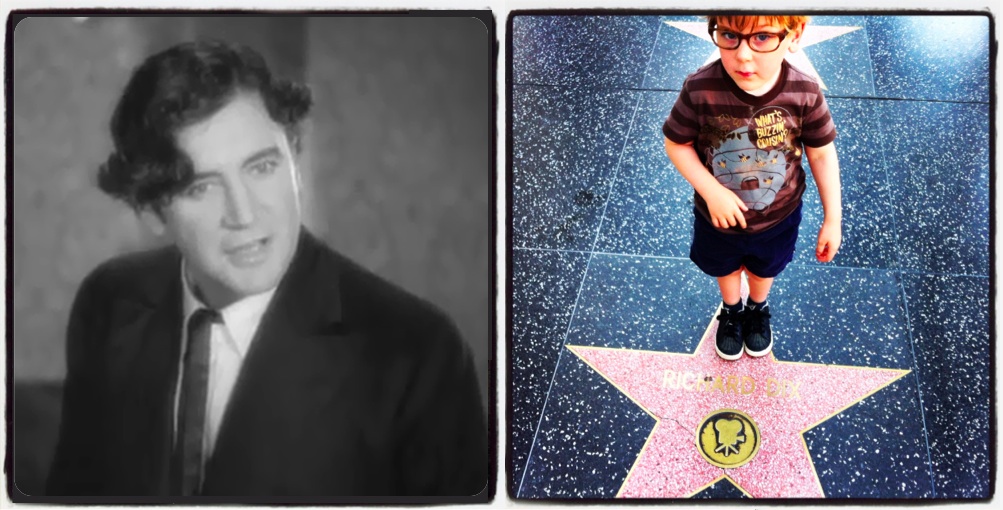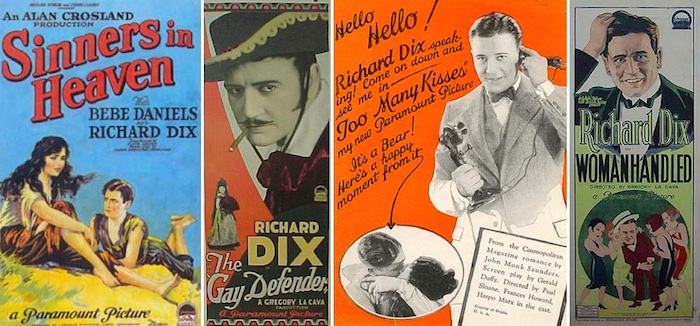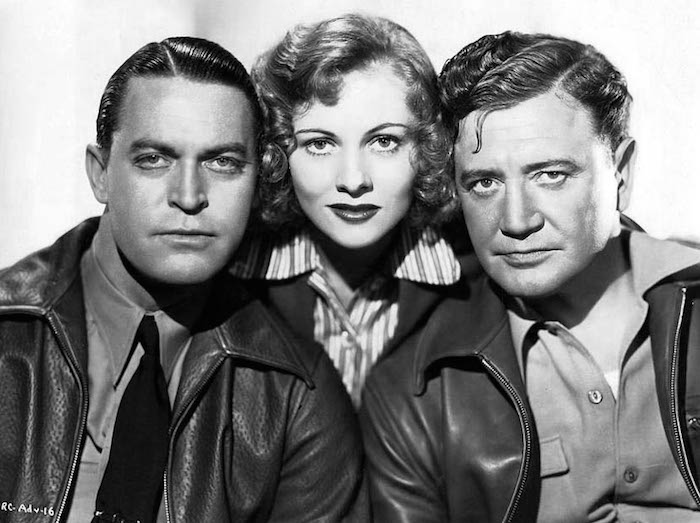 A weekly feature in which my five-year-old son is let loose on the Hollywood Walk of Fame, one of the most popular tourist attractions in Los Angeles, and chooses a star from among the more than 2,500 honorees. His “random” picks sometimes reveal unexplained connections such as the summer day in 2012 when he sat down on the star of actress Celeste Holm and refused to budge. We later learned that the Oscar-winning actress had died only hours earlier. There are five categories on the Walk of Fame: motion pictures, television, radio, music and theater but Charlie tends to favor the movies.
A weekly feature in which my five-year-old son is let loose on the Hollywood Walk of Fame, one of the most popular tourist attractions in Los Angeles, and chooses a star from among the more than 2,500 honorees. His “random” picks sometimes reveal unexplained connections such as the summer day in 2012 when he sat down on the star of actress Celeste Holm and refused to budge. We later learned that the Oscar-winning actress had died only hours earlier. There are five categories on the Walk of Fame: motion pictures, television, radio, music and theater but Charlie tends to favor the movies.
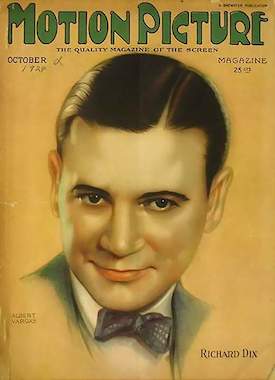 Charlie’s pick this week was the handsome, rugged star of both silents and talkies — Richard Dix. Born Ernst Brimmer on July 18, 1893 in St. Paul, Minnesota, he grew up wanting to be a surgeon until his love of acting led him to change his name and pursue his dreams on the New York stage. Dix came to Hollywood in the early 1920s where he was instantly proclaimed a matinee idol. The actor first worked for the Morosco Stock Company which led to contracts with Goldwyn and then Paramount Pictures. Dix’s most famous film at Paramount was Cecil B. DeMille’s first version of The Ten Commandments (1923). Another big film was The Vanishing American (1925) based on the Zane Grey novel, in which Dix played Native American hero Nophaie. Unlike many films of the day, The Vanishing American explicitly addressed the mistreatment of Indian tribes by the U.S. government. It was filmed on the vast Navajo reservation and employed thousands of Native American extras. There were many challenges during the shoot including a series of sandstorms that forced the crew to continually take apart and clean the six film cameras being used in the production. Dix was good-natured about the problems and wrote to reporter Grace Kingsley, “We’re really having a great time, even if we are in the most isolated spot in the United States. We have lots of fun, eat breakfast at 5 in the morning, gallop over the hot sands all day, return at night to eat an 8:30 or 9 o’clock dinner, and then just squander half an hour before rolling into bed and sleeping like the dead until the siren wakes up at 4:30 a.m.”
Charlie’s pick this week was the handsome, rugged star of both silents and talkies — Richard Dix. Born Ernst Brimmer on July 18, 1893 in St. Paul, Minnesota, he grew up wanting to be a surgeon until his love of acting led him to change his name and pursue his dreams on the New York stage. Dix came to Hollywood in the early 1920s where he was instantly proclaimed a matinee idol. The actor first worked for the Morosco Stock Company which led to contracts with Goldwyn and then Paramount Pictures. Dix’s most famous film at Paramount was Cecil B. DeMille’s first version of The Ten Commandments (1923). Another big film was The Vanishing American (1925) based on the Zane Grey novel, in which Dix played Native American hero Nophaie. Unlike many films of the day, The Vanishing American explicitly addressed the mistreatment of Indian tribes by the U.S. government. It was filmed on the vast Navajo reservation and employed thousands of Native American extras. There were many challenges during the shoot including a series of sandstorms that forced the crew to continually take apart and clean the six film cameras being used in the production. Dix was good-natured about the problems and wrote to reporter Grace Kingsley, “We’re really having a great time, even if we are in the most isolated spot in the United States. We have lots of fun, eat breakfast at 5 in the morning, gallop over the hot sands all day, return at night to eat an 8:30 or 9 o’clock dinner, and then just squander half an hour before rolling into bed and sleeping like the dead until the siren wakes up at 4:30 a.m.”
Unfortunately, the majority of Dix’s early films are lost to time. They include silents with such provocative titles as Sinners in Heaven, The Gay Defender, Too Many Kisses and Womanhandled.
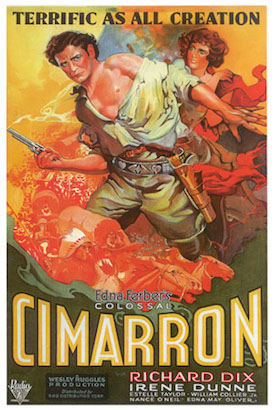 Unlike many stars of his day, Richard Dix successfully made the transition to talkies. He joined the newly formed RKO Studios in 1929 and made 26 films for them, including RKO’s only Best Picture Oscar winner, the western Cimarron. That film, based on the Edna Ferber novel, also earned Academy Award nominations for Dix and co-star Irene Dunne. The role of Yancey Cravat was Dix’s favorite. “In Cimarron,” he told a reporter, “for the first time in my life I portray a man’s gradual deterioration over a period of 40 years. I also was given the task of creating the sympathy, glamour, color and mystery of the Edna Ferber hero already enshrined in the hearts of millions of readers. I never worked so hard in my life — or enjoyed a role more. I never expect to have a greater part.” He didn’t, really — although he had another big success the following year in David O. Selznick’s World War I drama The Lost Squadron with Mary Astor, Joel McCrea and Erich von Stroheim. He also starred in the 1935 British sci-fi classic The Tunnel, played Texas politician Sam Houston in Man of Conquest (1939) with Joan Fontaine, and played the lead in the aviation drama Men Against the Sky (1940) written by novelist Nathanael West.
Unlike many stars of his day, Richard Dix successfully made the transition to talkies. He joined the newly formed RKO Studios in 1929 and made 26 films for them, including RKO’s only Best Picture Oscar winner, the western Cimarron. That film, based on the Edna Ferber novel, also earned Academy Award nominations for Dix and co-star Irene Dunne. The role of Yancey Cravat was Dix’s favorite. “In Cimarron,” he told a reporter, “for the first time in my life I portray a man’s gradual deterioration over a period of 40 years. I also was given the task of creating the sympathy, glamour, color and mystery of the Edna Ferber hero already enshrined in the hearts of millions of readers. I never worked so hard in my life — or enjoyed a role more. I never expect to have a greater part.” He didn’t, really — although he had another big success the following year in David O. Selznick’s World War I drama The Lost Squadron with Mary Astor, Joel McCrea and Erich von Stroheim. He also starred in the 1935 British sci-fi classic The Tunnel, played Texas politician Sam Houston in Man of Conquest (1939) with Joan Fontaine, and played the lead in the aviation drama Men Against the Sky (1940) written by novelist Nathanael West.
Later in the 1940s, Dix starred in seven films for Columbia Studios based on the radio mystery The Whistler, playing a different character in each one. Richard Dix retired from films in 1947. He died from a heart attack at the age of 56 on September 20, 1949. While Charlie may be the only five year old currently paying homage to this actor, Richard Dix had a pretty remarkable career, playing leading roles in nearly all of the films he made over a period of nearly three decades.

